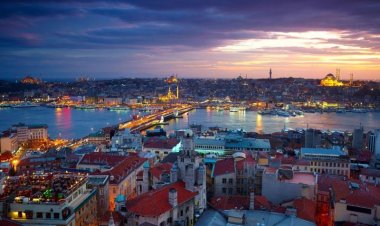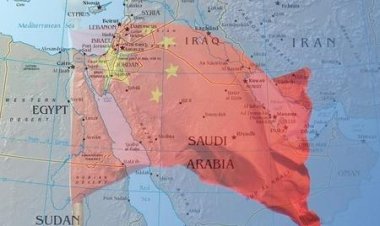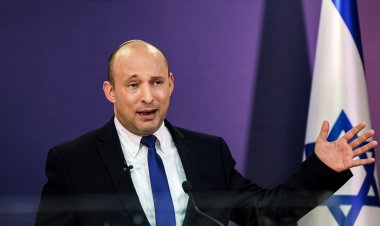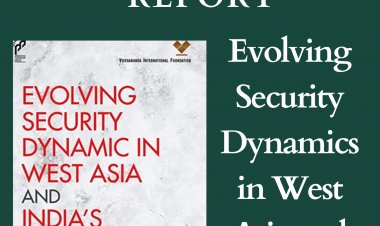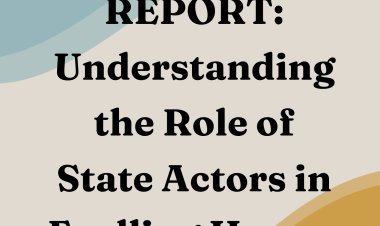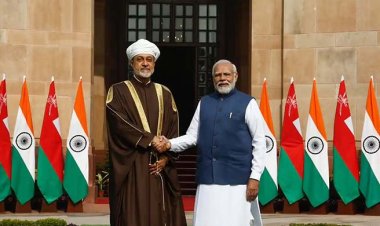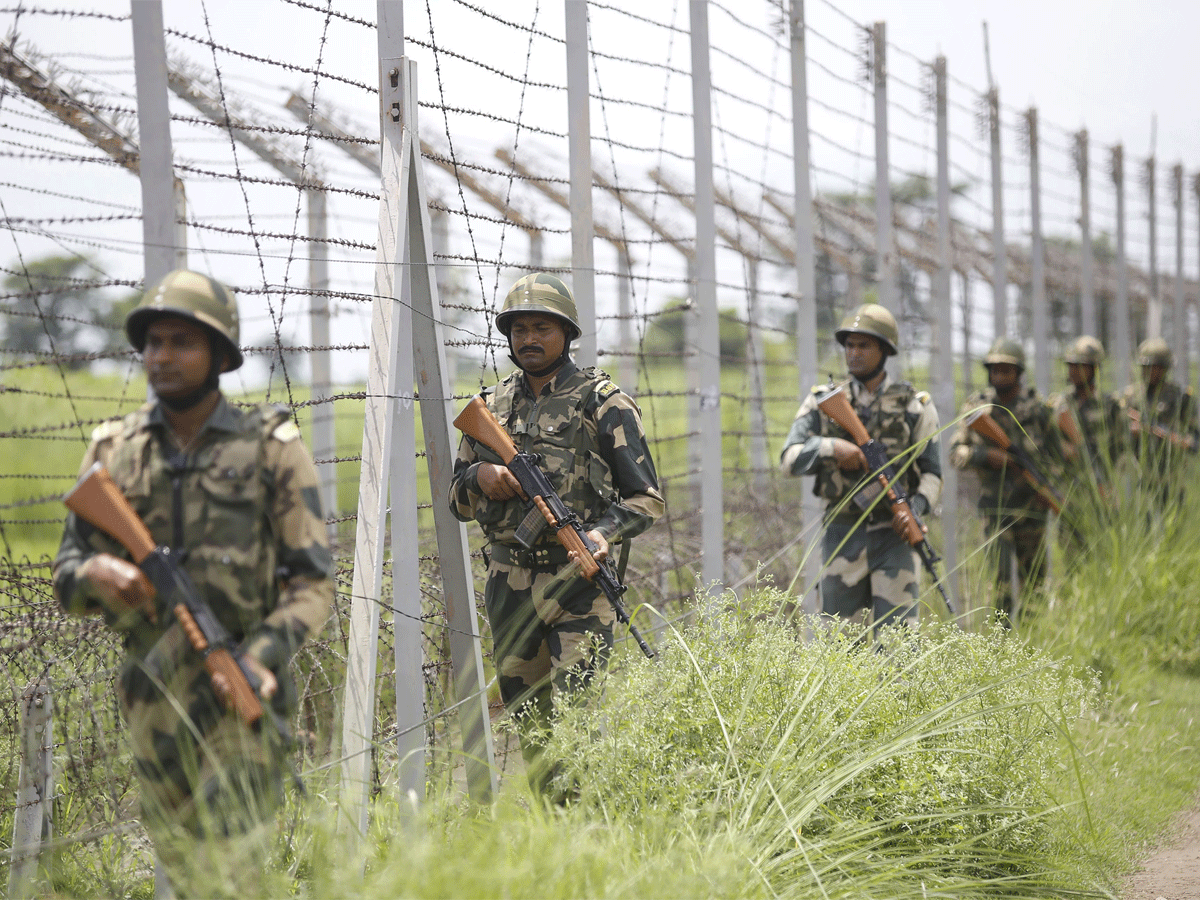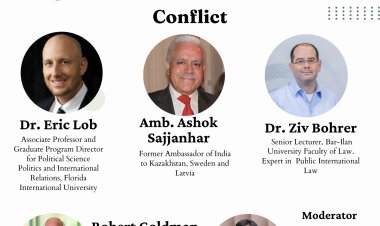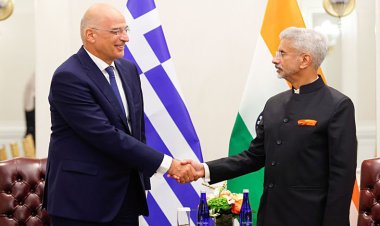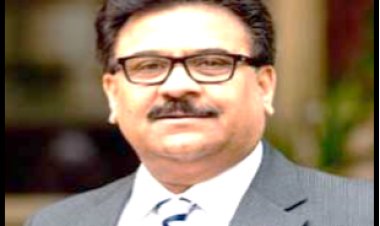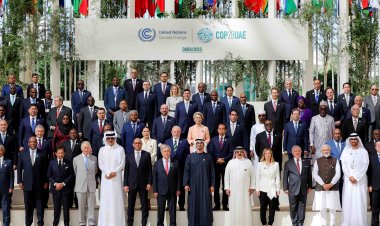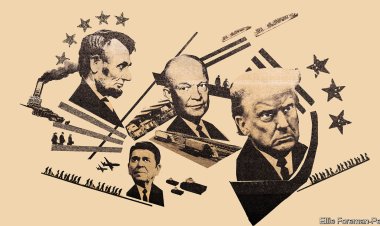India and Pakistan Are Still Haunted by Partition and Its Bloodshed. Is That Fate Now Facing Israel and Palestine?
Were Gandhi and Nehru right to cling to a one-state ideal? Or was Jinnah right to insist on a two-state solution? And what lessons are there for the Mideast leaders of today - and how many lives can be saved?
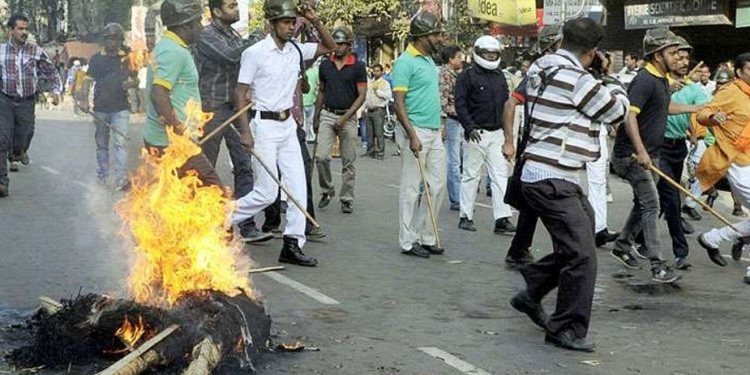
Analysis
By Abhinav Pandya
One central, critical question still haunts the 1.5 billion people of India and Pakistan: Was Muhammad Ali Jinnah, the "Great Leader" who founded Pakistan, right or wrong? Was he right or wrong to declare Islam and Hinduism as two incompatible cultural, social, political and religious systems, with the only solution division into two states?
It might seem remarkable that seven decades after both India and Pakistan gained independence, this question is still being relitigated.
But the establishment of two states had an immense human cost: a fraught and sometimes bloody population exchange of 14.5 million people, and a lasting effect on the national psyches of both countries.
Examining Jinnah's choice has resonance beyond the Indian subcontinent as well – to other conflict zones, such as Israel and Palestine, where there is an intense debate about whether a single multiethnic state is preferable to the two-state solution that is still the model promoted by the international community, despite decades of unsuccessful peace-making.
That the ghost of Jinnah still haunts India's political and academic environment is indisputable. Only a month ago, right-wing Indian students triggered a near-riot at the Aligarh Muslim University, which Jinnah founded, when they demanded his portrait be taken down, though it had been hanging there for decades.
The unrest spread beyond the campus; journalists, politicians, and academicians across the political spectrum almost unanimously criticized Jinnah as a bigoted communalist responsible for the partition of India. The province's chief minister declared: "There’s no question of celebrating Jinnah in India."
The persistence of deadly communal riots over the last 70 years means that it's particularly difficult for those caught in events to judge Jinnah's stance, which also offends secular, heterogenous social ideals held, at least nominally, by many Indian political leaders. But with hindsight, it's more clear that Jinnah reflected grassroots reality at the time, and his challenge to a secular unified republic can be seen as deeply pragmatic – and saved further bloodshed.
And for many Indian intellectuals, politicians and historians, there is another obstacle to a pragmatic assessment of Jinnah: their deliberate denial of the image in the popular Hindu imagination of Muslims in Indian history as a threatening, invasive force, from whom separation is not just a preference - but essential to survival.
This narrative of Muslim invaders as murderers and plunderers goes back a 1000 years, and its perhaps most iconic reference point is the figure of Mahmud Ghaznavi, an 11th century ruler who conquered his way through modern-day Afghanistan, eastern Iran and north-western India. It is said he massacred 50,000 Hindus in his serial raids, and destroyed numerous holy sites.
In Hindu memory, two aspects of Ghaznavi's actions stand out, replicated by subsequent Muslim conquerors: his determination to spread Islam and to punish Hindu 'idolators' (later invaders took the titles of "butshikan" (iconoclast) and "ghazi" (religious warrior) to indicate their similar fervor.)
That left-wing historians counter-argue that the Muslim Sultans killed an equal number of fellow Muslims they considered heretics, and that the overriding motivation for all these historical figures were economic, not religious, have little impact. In the words of the eminent politician-scholar of India, K.M. Munshi: "For a thousand years Mahmud's destruction of the (iconic Somnath) shrine has been burnt into the [Hindu] collective sub-consciousas an unforgettable national disaster."
This history formed the cultural and political context for the twentieth century's debate about whether a single state could contain two distinct populations.
Back in the 19th century, Jinnah's forerunner and Muslim reformer, Sir Sayyid Ahmad Khan, first propounded the theory of Hindus and Muslims constituting two different and incompatible cultural systems in the modern era.
In the early 20th century, the first effective collective political force for colonial India's Muslim community, the Muslim League, demanded separate electorates for Muslim voters. Even Muslim groups who had allied with Mahatma Gandhi in the non-cooperation movement against the British, turned to communal politics in the 1920s. At the same time, Gandhi came under fire for turning a blind eye to the communal riots in Kerala in which hundreds of Hindus were killed.
Thus, in the popular Hindu imagination at least, Jinnah could be seen as the last phase in a story of Hindu-Muslim animosity that began way back in 712 AD with the Arab invasion of Sind. Jinnah himself bolstered this narrative by hailing that year as the genesis of the movement to establish Pakistan.
Given this divisive history, wasn't the Indian National Congress’ (INC) rejection of Jinnah’s two-nation theory grasping at a foolhardy idealism? Or arrogance that didn’t allow them to hear the authenticity of Jinnah's call for a separate Muslim state?
The riots that accompanied partition, when it finally happened in 1947, led to more than a million deaths and saw savage sexual violence in which 75,000 women were raped.
Post-independence India has also witnessed serial and regular communal violence that have claimed the lives of thousands of innocent Hindus and Muslims. In 2017 alone, India witnessed 811 communal incidents in which 111 people died, and 2384 were injured.
Even without riots, social relations between Hindus and Muslims are often fractious and tense.
In several Indian cities, the Hindu majority derogatorily refers to Muslim areas as "mini-Pakistans." In some mixed towns the situation is so fragile that any minor incident - a dispute over a religious procession, an affair between a Hindu and Muslim - has the potential to spark bloodshed. This all means that the space for social interactions between the two communities has shrunk alarmingly.
That begs the question whether the partition into two states has also led to a domestic partition between Hindus and Muslims within India itself, and how far this distancing and retrenchment will go.
Within India, Muslims find it far harder to obtain agreement to rent accommodation; they face deep-seated discrimination when applying for jobs.
This structural prejudice is one of the factors increasing the attractiveness in religious radicalization among India's Sunni Muslims, a largely Saudi-funded phenomenon building on a Wahhabi presence in India going back to the 18th century that I explored in a previous Haaretz article (Does Saudi-funded Muslim Radicalization Threaten India?)
In a parallel development, Hindu nationalism and extremism is also on a sharp upward trajectory. Communal violence rose by 28% between 2014 (when the Hindu-nationalist BJP government was elected) and 2017. Killings over beef-consumption have become common. Post-2014 India is no more the non-aligned, formally secular India of Nehruvian socialism.
In today’s India, there are even Hindu leaders who warn of the potential for a Syria-like civil war between the two religious communities. Today’s India openly speaks of a Zionist-Hindu alliance against Islamic extremism.
Indeed, even India's founding fathers, Gandhi and Nehru, have lost their prestige over the last five years, in the face of escalating criticism for their "appeasement" of Islam and their misplaced idealism in opposing partition. The disgust with, and hatred for, them are evident on social media platforms, where another clear message is that they failed to implement "full" partition – i.e. the complete transfer of Hindus to India and Muslims to Pakistan.
That has led to the surprising and unsavory spectacle of Gandhi’s murderer, Nathu Ram Godse, a right-wing advocate of Hindu nationalism, attaining hero status among a vast section of the Indian middle-class. That goes hand-in-hand with an onslaught within academia and in the media against historians who, nationalists allege, downplay historical Muslim atrocities.
And in the years since 1947, Muslims in India have also accrued numerous victims murdered by their fellow-citizens. They look back to the bloody riots of 1946 – Bengal's Week of the Long Knives where, in the wake of Jinnah's call for a general strike to pressure for an independent state, Muslims were targeted by Hindu crowds and several hundred killed.
That increased both their determination for a place of safety of their own, but also the sense of alienation and fear among the Muslims who stayed in India. Had Congress accepted his demand for partition, Jinnah would not have given the call for for the direct action day, and many lives would have been saved.
Those who still critique the idea of partition, and oppose Jinnah’s thought, argue that through history the peaceful co-existence of Hindus and Muslims has been a norm, whereas riots are aberrations. They emphasize the critical role of the British’s divide-and-rule policy, which weaponized a previously low-level intercommunal tension, and assign blame to the Muslim League's communal politics and to Hindu extremism equally for giving birth to the Pakistan movement.
But the heavy history of communal violence indicates that partition was inevitable. If so, if the Congress party had accepted the reality of Hindu-Muslim divide gracefully and promptly, so many lives could have been saved in both pre and post-independence India and Pakistan.
Partition could have taken place, if not peacefully and amicably than at least in a far less violent manner, a less traumatic population transfer over a specified period mutually agreed-upon by India and Pakistan, if only sufficient planning had been done in advance to execute it.
Partition is still not history in India. The consequences of rejecting - and then only unwillingly accepting - partition are still being felt, not only within India, but also in the unremitting tensions with Pakistan.
Pakistan always felt an existential threat from India because, it believed, the latter, in instinct and principle, never really accepted the idea of a separate Muslim state. That's the view of Hussain Haqqani, a Pakistan expert, who bring this telling quote from the intelligence chief to Zia-ul-Haq, Pakistan’s dictator from 1977-88: "Indians do not recognize the existence of Pakistan in their hearts and their objective is still the creation of Akhand Bharat (Undivided India)."
India’s rejection of two-nation theory was perceived by the nascent Islamic republic, a far smaller country, as an existential threat. And, hence its leaders felt driven to strengthen the idea of Pakistan by an absolute differentiation from India - by adopting a militant and militaristic form of Islam as a state ideology, decimating its population's traditionally liberal Sufi traditions.
Thus India's Congress party's rejection of partition became, unwittingly, a key factor in Pakistan's radicalization, and its cultivation of radical terrorist groups who have shed blood around the world.
The trajectory of Pakistan’s development could have been different: without the perceived ongoing threat from India, the two states could have found a calmer modus vivendi - as good neighbors doing business, similar to how India and Bangladesh interact today. To paraphrase the former Indian prime minister Atal Bihari Vajpayee: "Lamho ne Khata ki thi, Sadiyo ne Saza payi hai" (Mistakes are made in a moment, but the suffering lasts for an age)."
It's clearly impossible to rewind history now, but the lessons from the story of partition, learnt through great suffering, can surely be applied to another conflict zone with the aim of averting the scale of death and violence seen in in the subcontinent in 1947 and since: Israel-Palestine.
If India’s experience is any guide, it indicates that the two-state solution still offers the path of least conflict: A clear and negotiated decision to implement partition into two states. But the huge obstacle is the lack of buy-in: The two state solution has lost much of its appeal within both Israeli and Palestinian camps.
Up to about a decade ago, popular opinion on both sides was still favorable; significant numbers of Arabs and Palestinians expressed regret that the Arab world rejected partition in 1947.
But more recently support has dropped below 50%, the current right-wing Israeli government is focused on annexation and settlement of the territory earmarked for a future Palestinian state, and the Palestinian leadership has declared the two-state era as being in terminal decline, or already dead.
The long history of conflict, occupation and terrorism means there are fewer strong voices calling for the two-state solution. Israelis, in particular, seem to prefer the "comfort" of the status quo and fear the risks of two states.
But as the unresolved tensions within India and between India and Pakistan, flowing from a partition in extremis rather than negotiations, amply demonstrate, aspiring to a status quo built on fear, prejudice and a sense of existential danger can be the most dangerous risk of all to take.
Abhinav is the author of “Radiclaization in India: An Exploration.” He is a Strategic Affairs Analyst with an extensive counter-terrorism experience in Kashmir. He is also the founder and CEO of Usanas Foundation.
Disclaimer: The paper is the author’s individual scholastic articulation and the facts and figures quoted are duly referenced, as needed, and are believed to be correct.

